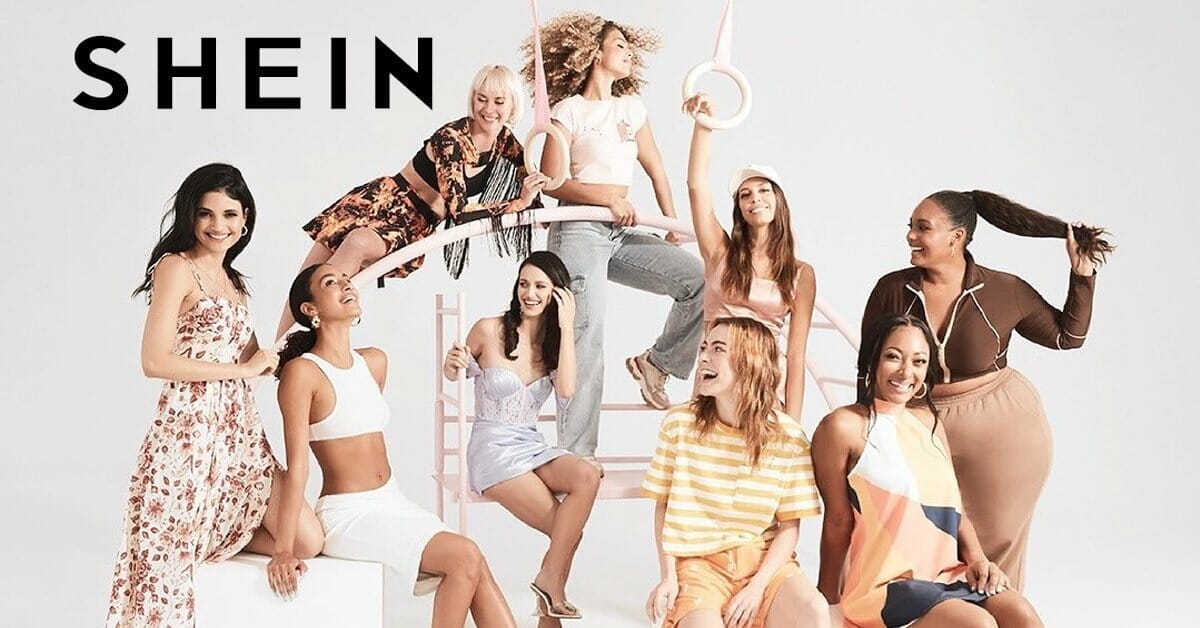
SHEIN is praised for its trendy styles, cheap prices, and huge product selection. As an entirely digital e-commerce company, SHEIN generates about $10 billion in annual revenue.
What SHEIN doesn’t tell you is that despite their massive profits, they steal styles from designers, pay their clothing makers below a living wage to work in sweatshop conditions, and produce huge amounts of waste while creating their excessive variety of styles.
In fact, they add 6,000 styles to their site every single day. Let’s be clear about one thing: this level of hyper consumption can never be sustainable.
SHEIN is the definition of fast fashion.
Millennials mock the brand on Twitter for culturally appropriating styles, including a Swastika necklace, Islamic prayer mats as Greek rugs, and traditional South Asian clothing as pant sets.
Meanwhile, they continue to grow with the help of influencers and Generation Z ‘zoomers’, unboxing $1,000 SHEIN hauls on TikTok–string bikini sets for just a few dollars, knockoffs of the trendiest handbags, shoes, and jackets for $20 or less, and cheap crop top options for nights out on the town.
SHEIN may be an easy option to look stylish, but their company is the epitome of the phrase ‘cheaper is not better.’ After getting hit with claims of unethical production practices, they have hid behind greenwashed claims.
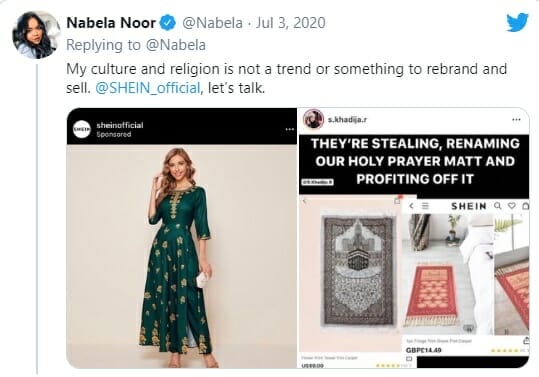
How Ethical and Sustainable is SHEIN?
Eco-Stylist looked further into SHEIN’s practices and policies, including their greenwashed claims. Our findings prove SHEIN is not better quality, not better for the environment, not better for the makers—simply not better for anyone.
Our criteria is based on three key areas: transparency, fair labor, and environmental sustainability. Brands earn points in this criteria for things like sharing their factory list, paying living wages, using sustainable fabrics, sustainable packaging, circularity, water savings, CO2 savings, and tracing their full supply chain.
So how did SHEIN score? Our original evaluation in 2021 yielded 0 points out of a possible 100 points—yikes!
Is SHEIN Improving its Sustainability Practices?
We took another look at SHEIN in 10/2022 to see if they’ve made any major changes. This time they earned 4 points—small progress but hardly on pace for a brand that claims they care about people and the planet.
Is SHEIN Bad for the Environment? Another Rating
Don’t just take our word for it though! Remake evaluated SHEIN in their 2021 Accountability Report, and SHEIN scored 5 points out of a possible 150 points.
SHEIN’s Impact on Clothing Makers and the Planet
First and foremost, SHEIN doesn’t make it easy to find out who their suppliers are. This is a key factor in traceability and transparency, two values SHEIN does not have.
SHEIN’s own claims prove this as they offer fluffy statements and empty promises, without evidence or accountability.
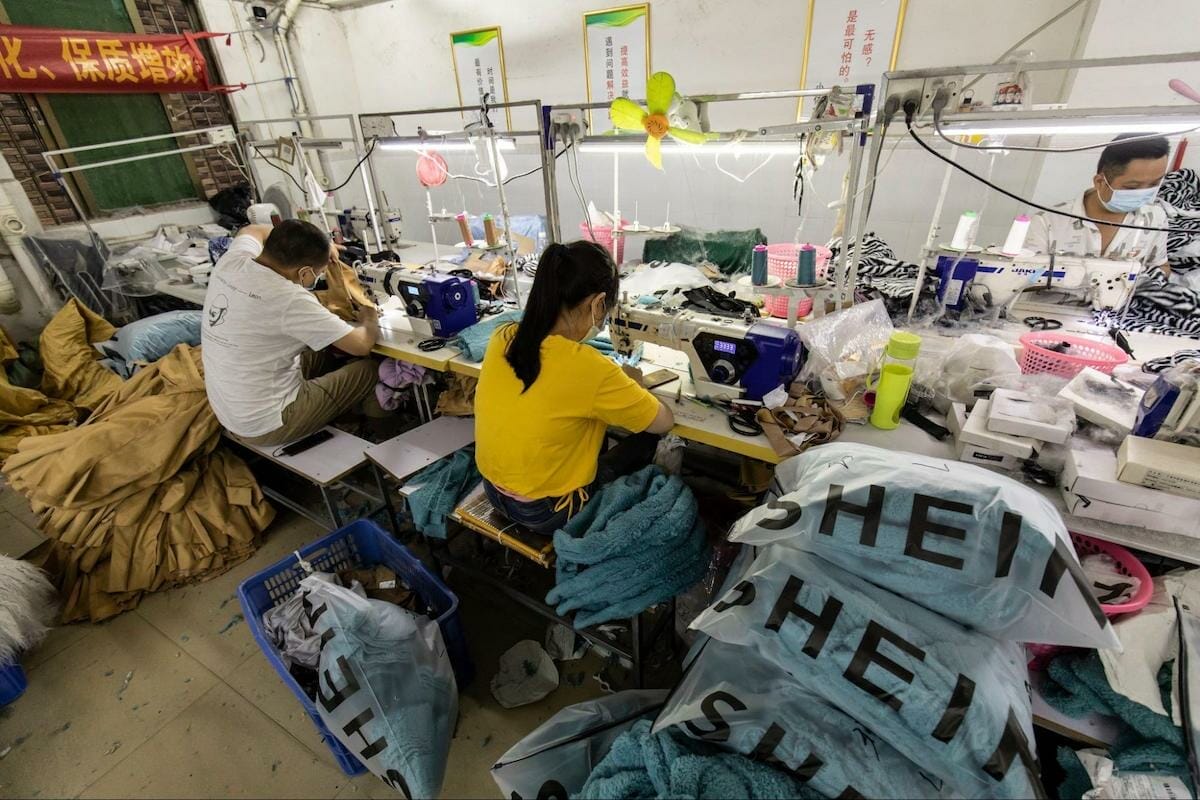
SHEIN likes to say it treats “employees like family by providing industry-leading working conditions. From offering above-average salaries and benefits to building state-of-the-art factories and offices, we make sure everyone can work in a safe, clean, happy and productive environment.”
Not only does SHEIN lack supporting evidence of fair working conditions, but recent research proves that it is a lie, with SHEIN factory workers clocking in up to 75 hours per week!
Does SHEIN Use Forced Labor?
Yes, SHEIN clothes are made with cotton likely sourced from forced Uyghur labor. Two lab tests conducted for Bloomberg News tied cotton from SHEIN clothes to the Xinjiang region in China, where Uyghur forced labor happens, with a high degree of certainty.
Cotton from the Xinjiang region is currently banned in the US because of forced Uyghur labor. However, through loopholes in US customs SHEIN is able to bypass import regulations and get clothes with said cotton into the US market.
While SHEIN denies forced labor and labor abuses in their supply chain, they’ve also offered no rebuttal of the lab findings, or other findings of sweatshop conditions in their supply chain.
Does SHEIN Harm the Environment?
Over half of fast fashion like SHEIN is thrown away in less than one year, according to McKinsey. As an ultra fast fashion brand dropping thousands of styles per day, SHEIN is responsible for accelerating this trend.

This overconsumption isn’t just leading to overflowing landfills and dumping used clothes in Africa, it’s also wasting enormous amounts of water, energy, and CO2 emissions to make new clothes that will only be discarded soon after. From the fabrics to the manufacturing and the shipping, SHEIN is bad for the planet.
What About the SHEIN Haul Trend?
The SHEIN haul trend, which has 4.5 billion views on Tiktok, is the driving force of SHEIN overconsumption. This social media trend promotes buying excessive amounts of clothes that you don’t need, because they’re cheap, and which ultimately you don’t value.
Do SHEIN Clothes Contain Toxic Chemicals?
Let’s look at the sustainability of their materials. Dangerous levels of lead and other toxic chemicals have been found in SHEIN clothing. These chemicals are bad for workers, bad for the planet, and bad for the consumers who purchase SHEIN’s clothes, whether new or second hand.
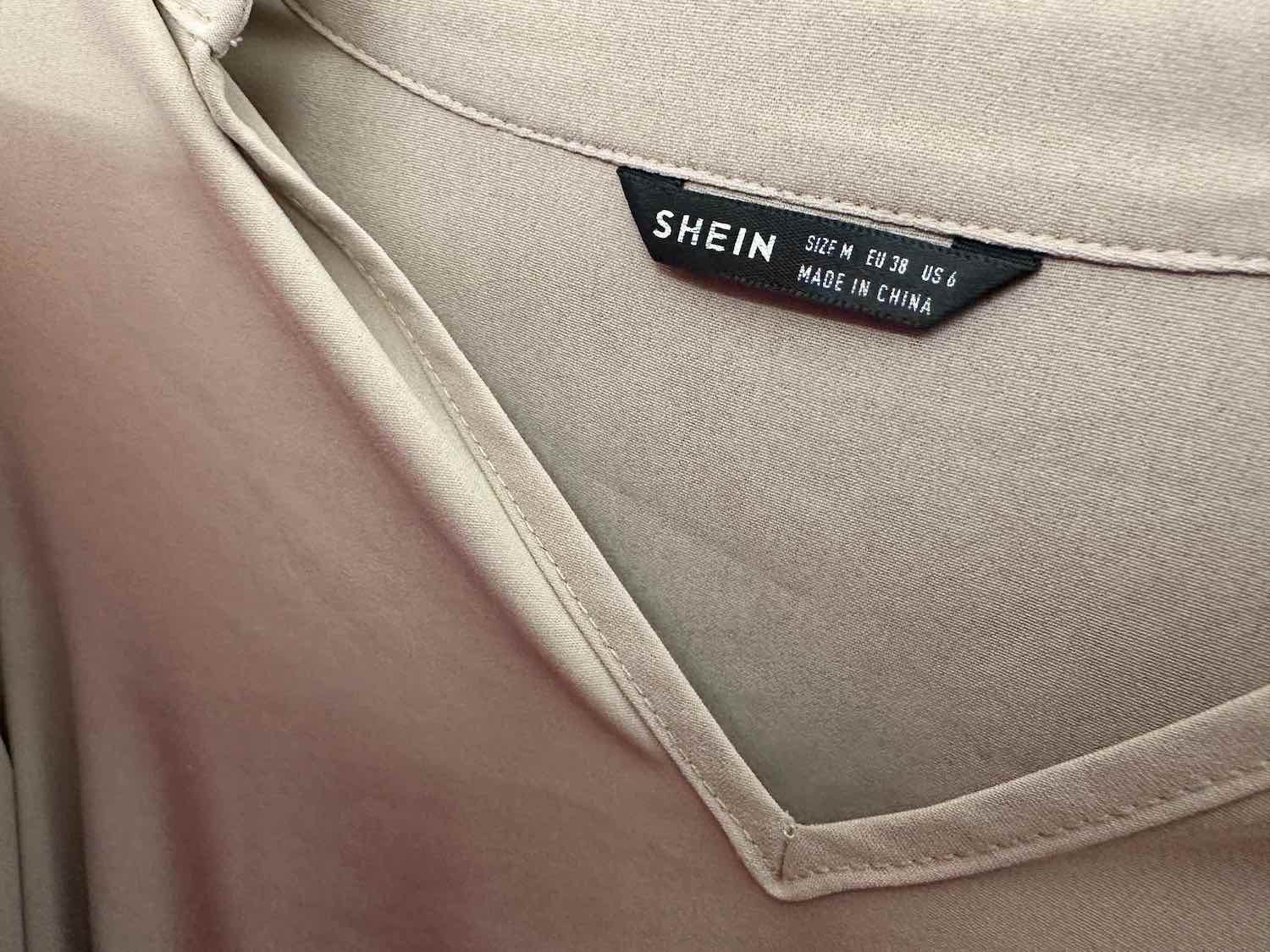
SHEIN claims to be environmentally conscious. Their website says, “When selecting fabrics, we do our best to source recycled fabric, such as recycled polyester, a non-virgin fibre that has little impact on the environment and reduces damage to the original material.”
But how much of this recycled polyester are they ‘doing their best’ to use? What is their environmental impact to begin with?
The best brands measure their impact and offer tangible goals for improvement. SHEIN, of course, provides us with only greenwashing…
Are SHEIN Clothes Made from Plastic?
Most SHEIN clothes are made from synthetic fabrics like polyester that are derived from fossil fuels. It’s the environmental equivalent of wearing oil or plastic.
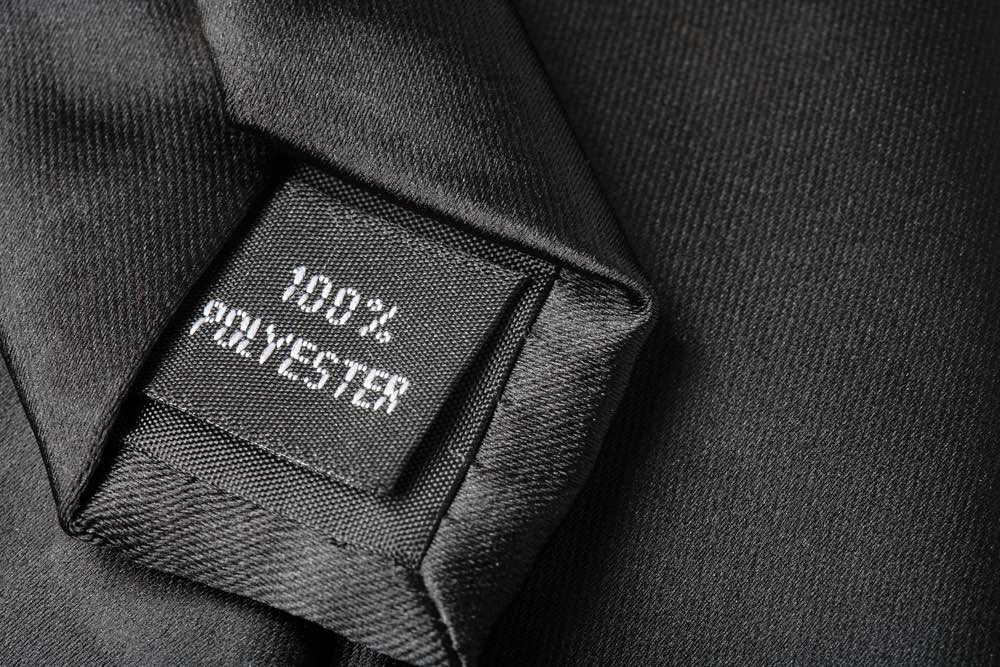
How is SHEIN Improving Conditions?
As noted, our score of SHEIN increased from 0 to 4 points. They earned some points by having a public Code of Conduct, a diversity policy, and sharing the results of their factory assessments.
While it’s a small step forward, SHEIN really needs to do more to ensure fair wages for clothing makers and better environmental practices. Their own assessment findings showed that 83% of SHEIN’s suppliers scored between moderate to very poor on worker health and safety concerns.
Is it Ethical to Use SHEIN?
It is pretty obvious SHEIN has some serious work to do to put any truth behind their bold claims of sustainability efforts.
Lucky for them, without many realistic and enforceable transparency, fair labor, and sustainability policies they only have room to improve.
Summary: How Ethical is SHEIN?
For a quick overview of SHEIN’s ethics and sustainability, check out our video:
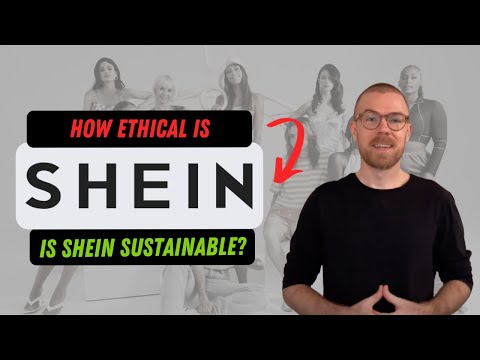
Sustainable SHEIN Alternatives
While we are usually optimistic that brands can improve, it is hard to imagine a brand this far off the mark, that drops 6,000 styles in a day, can ever be sustainable. Of course, we hope we’re wrong.
The good news: there are brands that offer similar styles as SHEIN, but actually have truth behind their sustainability claims. These brands offer higher quality clothes, at a more responsible rate of production, made better for people and the planet.
Sustainable SHEIN Swap: Wolven
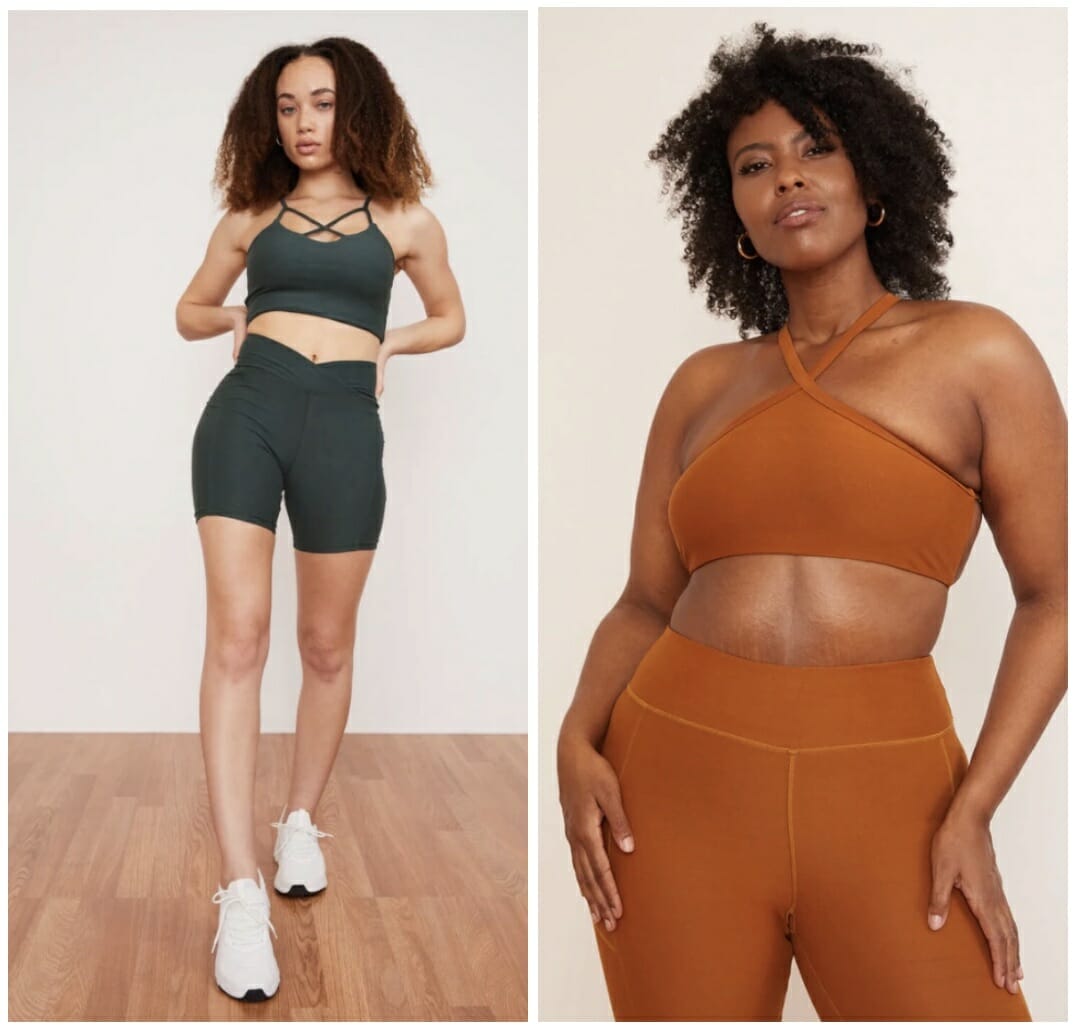
Wolven, an Eco-Stylist Certified brand, is where sexy meets sustainable. As a climate neutral company, they also use recycled fabrics, more sustainable packaging, and re-sell second Wolven clothes right on their site. Check out their leggings, swimwear, and tops.
Ethical Alternative to SHEIN: Pact
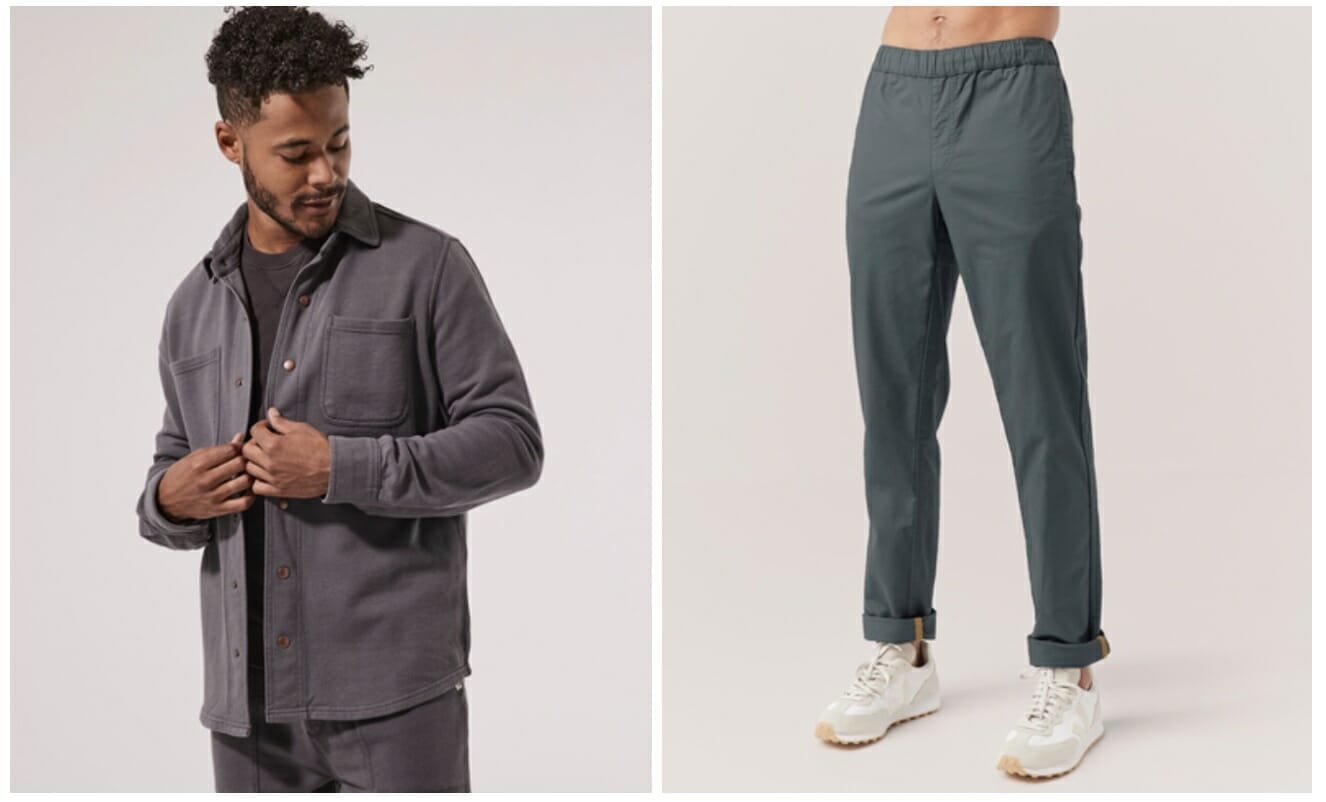
Pact, rated Eco-Stylist Silver, is your go-to for organic cotton basics, loungewear, and casual attire. They have GOTS certification, Fair Trade certification, and use more sustainable packaging.
Eco-Friendly Clothing Brand: Colorful Standard
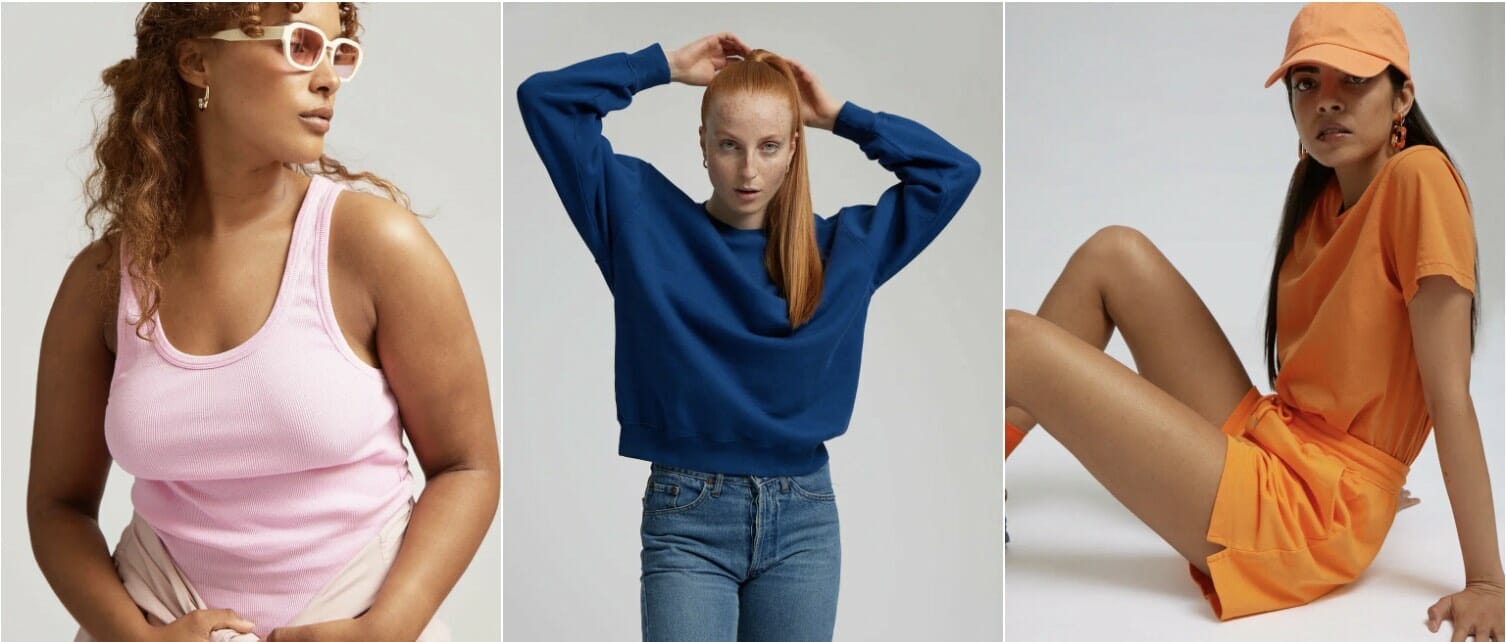
Colorful Standard is rated Eco-Stylist Silver. When you want t-shirts, hoodies, sweatpants, sweatshirts, shorts, and beanies in over 40 colors this is where you go. They pay their clothing makers living wages and use OEKO-TEX certified fabrics meaning no harmful chemicals or dyes.
SHEIN Alternative: Girlfriend Collective
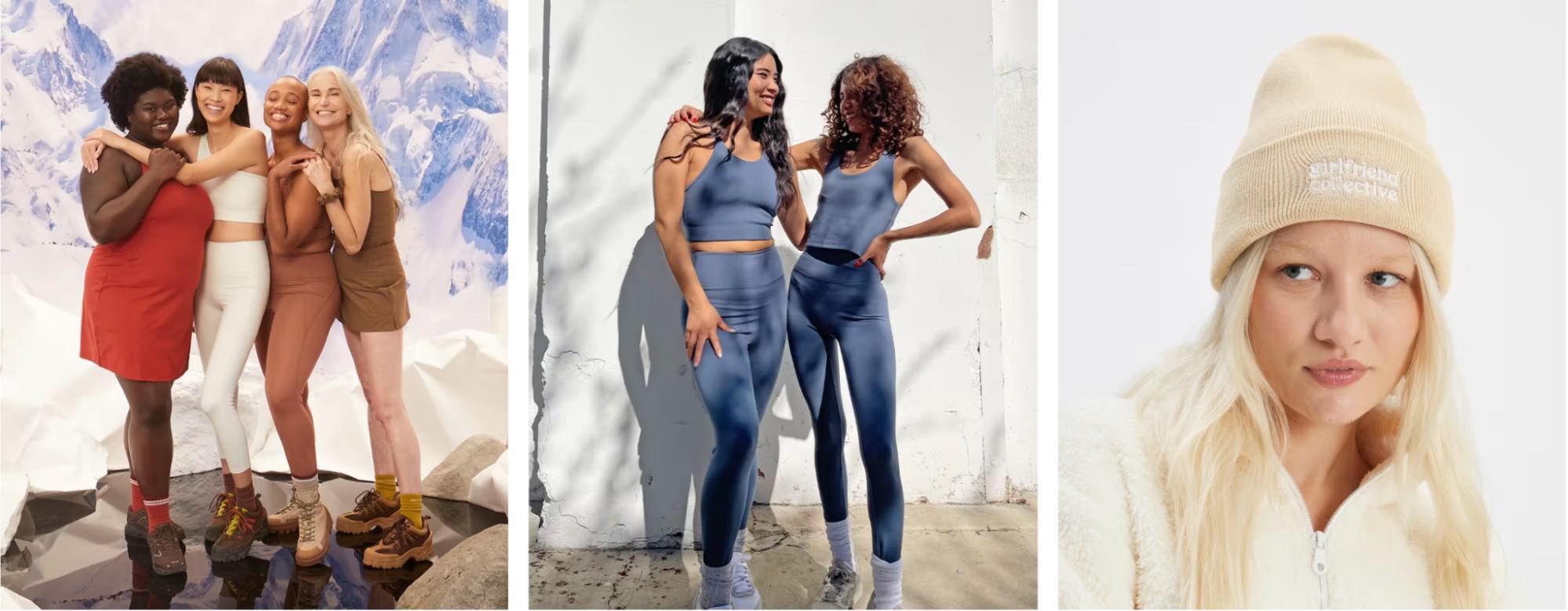
Girlfriend Collective is Eco-Stylist Certified (of course), includes models of all body types and identities, has great color selection for their lounge wear products, and is designed with comfort in mind.
Sustainable Alternative to SHEIN: Groceries Apparel
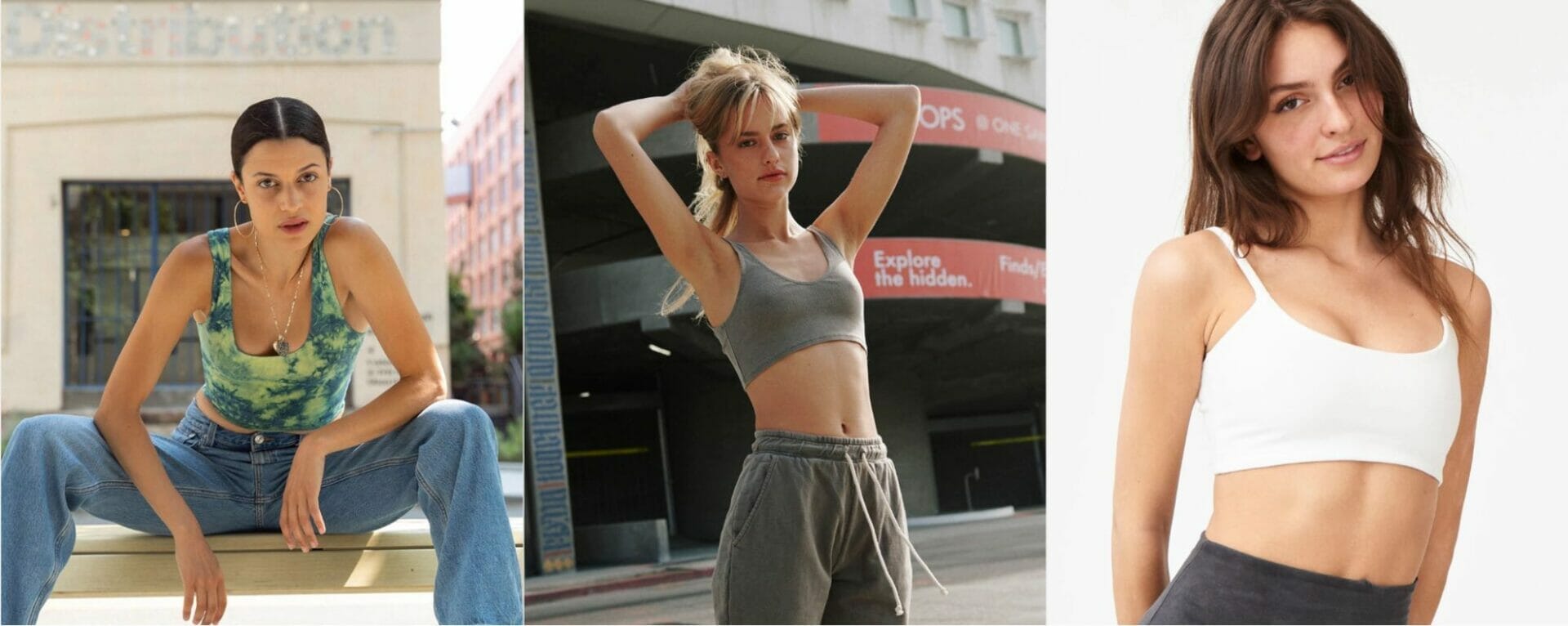
Groceries Apparel is another Eco-Stylist Certified alternative to SHEIN. Click through to see how they rated on Transparency, Fair Labor, and Sustainably Made.
Groceries Apparel specializes in active and casual wear that is made out of 100% organic or recycled fabrics. They know how to do business without compromising values.
18 More Sustainable SHEIN Alternatives
For even more alternatives to SHEIN, check out our full guide to sustainable SHEIN swaps.
Affordable Alternatives to SHEIN Clothes
Reminder: SHEIN’s prices are powered by un-sustainable practices and sweatshop labor. Almost any alternative is going to be more expensive per piece, but that doesn’t mean it has to be more expensive for you.
—>For the most affordable ethical fashion options check out our guide.
When you consider the cost-per-wear of a piece of clothing, something twice the price of SHEIN is actually cheaper if you wear it 3 times as much. Here’s some tips for switching from fast fashion to slow fashion:
- Buy less but buy better
- Only buy what you need
- Supplement your wardrobe with thrift shopping
- Restyling and layering basics can create endless outfit options
- Make it cool again to rewear and outfit repeat
Can Fast Fashion Brands Ever Be Good?
We can break down and evaluate fast fashion brands all day, and for many days, we have. But if you’re wondering about a brand we haven’t evaluated yet then a more pressing question is this: can fast fashion ever be good?
And honestly, the answer is no. Fast fashion parades itself as the solution to cheap and stylish clothing but the truth is that fast fashion has made the entire fashion industry less sustainable.
Thanks to fast fashion we buy 60% more clothes versus 20 years ago and over 50% of them end up in a landfill in less than one year.
The fast fashion model, as pioneered by Zara and H&M, is toxic. It has driven brands that previously were not fast fashion, like J. Crew, to become fast fashion in order to compete. It has also given birth to ultra fast fashion brands like Boohoo and SHEIN.
Think about it this way: if 2 brands both used organic cotton but one was fast fashion and one was slow fashion, which brand would pay clothing makers fairly and have a better impact on the planet? Hint: no fast fashion brand pays living wages to clothing makers.
Fast fashion is a great business model that has made a few select executives rich, but it’s bad for clothing makers and the planet.
Is SHEIN Fast Fashion?
Yes. With the number of new styles SHEIN puts out daily, they are one of the fastest fast fashion brands today, which also means they’re among the worst for the planet.
The Future of Fast Fashion Retailers
Fast fashion brands can become more sustainable, and of course, they should, but they will never be equivalent to slow fashion brands. The best thing we can do is ditch fast fashion and support slow fashion brands, thrifting, and all the better ways to build a sustainable closet.
Where to Find Quality Slow Fashion Companies
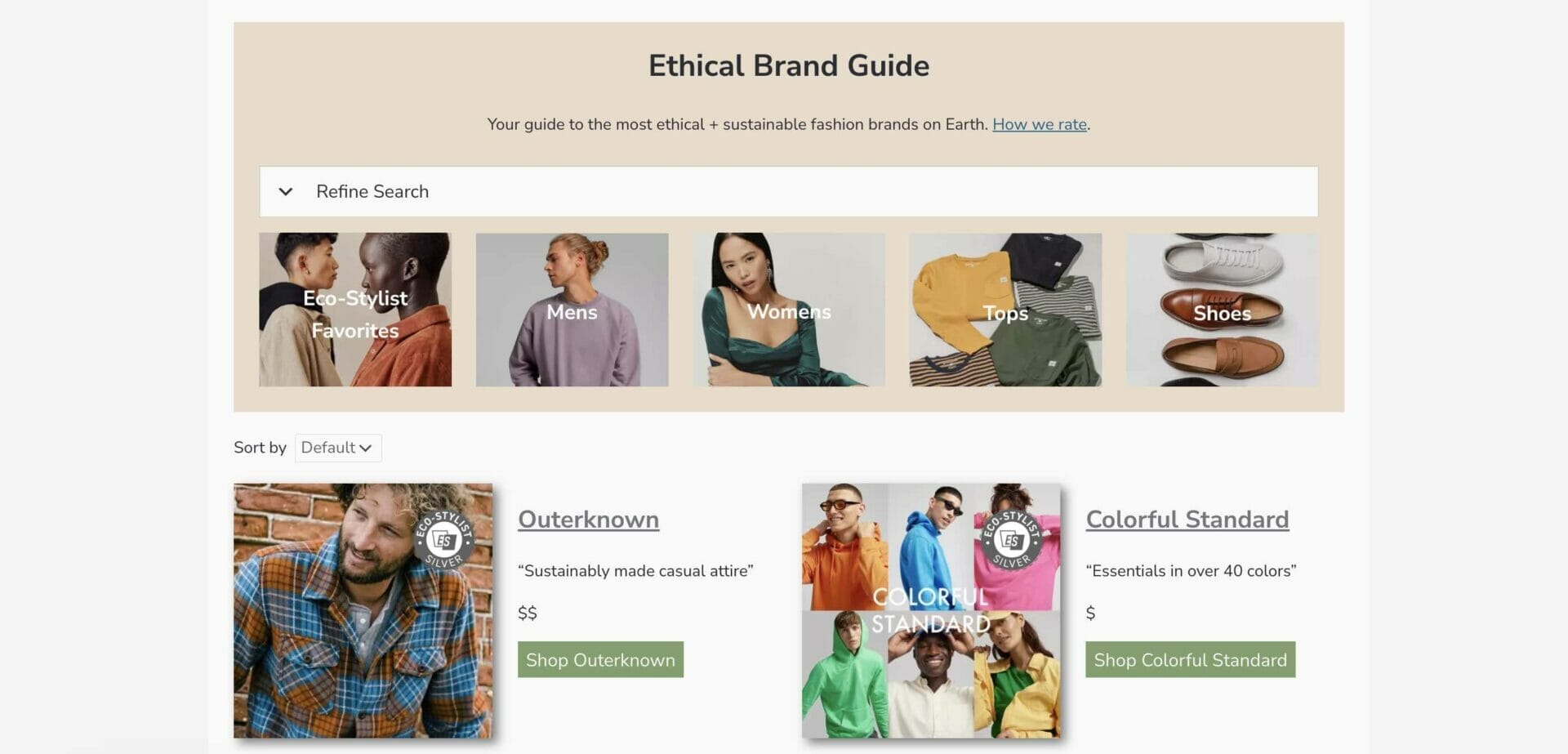
To find more Eco-Stylist Certified brands that value looking and feeling good in your clothes, shoes, and accessories, head to our sustainable brand guide!
Which brands would you like us to review next?
*Article updated 03/05/2023.

Emma is a writer at Eco-Stylist. She studies journalism and mass communications at the University of Iowa. Emma’s love for sustainable fashion was sparked by thrifting with her mom throughout her childhood.










14 thoughts on “How Ethical is SHEIN? Is SHEIN Bad for the Environment? Let’s Discuss.”
Everytime I go through this website I learn something new. Keep up the great work you are doing. Its making an impact!
Thanks!
That’s is crazy! I was thinking about ordering something from shein the other day and I heard someone mention of shein uses sweat shops and child labor. And I never heard that before and I was so shocked! So then I look in to it and find your article. Thank you for exposing this to us, because many people out there like me don’t even know that shein is like this and just sees it like and a “good” or “convenient” place to shop. But now I know and will not shop from here but genuine places instead I will try to tell anyone I can about this. Thanks again also for giving other places instead to shop from!
You’re welcome! So glad you found the article helpful and thanks for sharing! 🙂
here is something even crazier….if you look at the jewelry on Walmart.com they have the exact same jewelry pieces as Shein. so if they say sweatshops and child labor. ….is Walmart (American company) affiliated (in support of) chinas sweatshops?
People will knock cheap china clothing, and then blindly buy unethically sourced china made clothing because of a brand name and there favourite influencer told them to
I have always wanted to buy from SHEIN ever since I saw people making shein haul on tiktok, thank God I decided to do some research into it and found this article. Sweatshops are supposed to be of non-existent but sigh, guess it will never end right My heart is heavy for those unfair labor who work with shein and other sweatshops..
Right? We’re shocked too that this sort of practice still continues in 2022. The public awareness regarding fast fashion is starting to build and if we keep sharing and spreading the word we can make this a thing of the past. Thanks for reading our article!
I understand that sustainable alternatives are going to cost more and I’m not saying we should buy from shein but a lot of people use it because it’s basically thrift store prices. I don’t think it’s helpful to link to ‘shein alternatives’ that are that expensive. The shopping tips also feel a little insulting- I think it’s common sense to anyone hurting for money that we can go to thrift stores or buy less. I appreciate the information on shein being unsustainable and corrupt but it’s a shop for lower income people who want to look pretty and I just don’t think the recommendations are necessary if it’s gonna be either expensive stuff or common sense money saving tips.
Hi V – thanks for your comments.
First off, I’m sorry if you felt insulted by the shopping tips, that certainly was not our intention. I want to clarify one point about those tips: they aren’t directed at a specific group of people, those tips are for everyone. I also practice buying less and thrifting, and these two tips are essential practices for fashion to be more sustainable for the planet. Over 100 billion new garments are made every year (and growing) and most of those will end up in a landfill or incinerated. So when we recommend thrifting it’s not just because it’s more affordable, it’s because it’s also an important part of the solution that we believe in. So while I totally hear what you’re saying about buying less, thrifting, and outfit repeating seeming like common sense, these are actually radical things to do in today’s society and going against the norm.
Regarding SHEIN being a shop for lower income people I realize it might seem that way, but that isn’t actually the case. SHEIN is currently valued at $100 Billion, making it one of the richest private companies on the planet. They didn’t get there by targeting a lower income consumer-their main consumer is middle class. Just like Zara and H&M, SHEIN is a money making engine that exploits people and the environment in order to make the executives and CEOs extremely wealthy. The CEO of Zara, H&M, and SHEIN all have a personal net worth over $1 billion.
Their CEO will claim they are making “fashion more accessible”, just as the CEO of Zara and H&M will also claim, but this is a lie. You can’t exploit lower income women of color (the majority of clothing makers are) in order to make fashion more affordable for lower income people in countries like America. That math just doesn’t add up.
At the end of the day we’re not judging or assessing anyone’s personal situation. We are urging anyone and everyone who can and are able, to think twice about supporting fast fashion. While the prices are low the costs are extremely high.
Source:https://pitchbook.com/news/articles/esg-investor-test-fast-fashion-100b-shein
I really appreciate your article and won’t be ordering from Shein again, but really I wish there was some alternative that was affordable. As a mom of 3, I never get to splurge on myself. I wear my shoes and clothes until they fall apart. I was really excited to order a few pieces from them to spruce up my wardrobe without breaking the bank. But at what cost to others? Also, I realize the 3 companies you listed was to compare practices, but they’re apples to oranges cost wise as well. I shouldn’t have to shell out $50 for a plain tank or $300 for a simple cute dress. There’s got to be affordable clothes that use good practices as well.
Hey Corissa,
Thanks for your comment. I hear what you’re saying and this is one of the most frustrating things about fast fashion. You can only achieve prices that low by exploiting people and the planet, and by manufacturing clothes in ridiculously large and un-sustainable quantities (thereby saving costs). So if we compare anything to fast fashion, pretty much everything else seems expensive in comparison. And that’s what fast fashion has done over the last decade or two: they’ve shaped our perception of what’s affordable.
That’s why it’s essential to not compare prices to fast fashion but instead anchor the idea of what’s a fair price for clothing in something that’s made the right way (like the brands listed below). Some commonly known brands like Haggar (found at Kohl’s) haven’t increased their prices in decades. Logically clothing should be slowing increasing in price over time but it’s fast fashion that’s driven prices down (and caused some brands to keep price constant) and that’s dangerous when it means brands are cutting corners and turning to un-sustainable practices in order to achieve this.
That being said, the 3 brands we picked here as swaps were picked mostly for their style. In our brand directory we list a price range next to each brand from $-$$$ so for the more affordable options you can select the $ brands. Here’s a few I’d recommend looking at:
And you can find more brands here. I hope that helps!
-Garik
I laugh and discredit your entire ariticle when I see “forced Uyghur labor”. It made me start to wonder about the value of other sections when your research led you to believe in this.
Hi W, Uyghur forced labor is pretty well documented. It’s also not a partisan issue — bipartisan legislation has been introduced in Congress to crack down on the issue: https://wexton.house.gov/news/documentsingle.aspx?DocumentID=845
We welcome different perspectives here but typically it adds more value if you provide reasons and sources to support your argument.